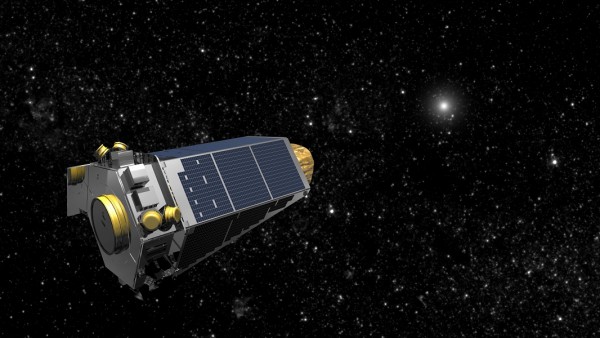By Ana Verayo, | April 10, 2016

The Kepler Space Telescope already detected more than 5,000 planet candidates where 1,041 of them are confirmed.
NASA officials just announced that the Kepler Space Telescope is now in emergency mode. According to Kepler and K2 mission manager, Charlie Sobeck from NASA's Ames Research Center, this announcement was based from a scheduled contact conducted by mission operations managers last April 7 where they revealed that Kepler was under EM (emergency mode) which is the unmanned spacercaft's lowest operational power mode.
Like Us on Facebook
Currently, the team is working to recover from this EM since it consumes energy and a significant amount of fuel. Kepler is estimated to be about 75 million miles away from the planet and this can take communication transmissions a delay of 13 minutes even if it travels within the speed of light.
In light of this situation, the spacecraft will now have priority access to NASA's Deep Space Network for further ground based communications to identify the exact problem. Until last April 4, the spacecraft was still fully operational and in good condition until carrying out this specific maneuver.
Mission engineers revealed that Kepler entered into EM some 36 hours after the space telescope was maneuvering in the direction of the core of the Milky Way which is host to a supermassive black hole. This mission has been extended in order to continue the hunt for exoplanets that are habitable for life and to collect data from supernovae, stellar nurseries and other space objects with the help of gravitational microlensing.
The space agency will be able to provide more updates about Kepler once they obtain the latest information about the status of the space telescope.
Since it was launched in 2009, its primary mission was to search for habitable planets similar to Earth outside the solar system. This mission was completed in 2012 where the space telescope revealed more than 5,000 exoplanets where 1,000 that were detected were confirmed planets.
This is apparently not the first time that Kepler encountered technical problems. In 2012, a problem in its gyroscopic reaction wheels that is crucial for changing the spacercaft's direction to aim at a certain region in space has failed. The second wheel became corrupted in May 2013. In order to fix this, the K2 mission was launched in 2014 which used the sun's solar energy and radiation pressure to re-orient the space telescope.
According to NASA's Kepler and K2 mission project scientist Steve Howell, the K2 mission is utilizing gravity to explore exoplanets which has been one of the greatest astronomical feats for this decade.
-
Use of Coronavirus Pandemic Drones Raises Privacy Concerns: Drones Spread Fear, Local Officials Say

-
Coronavirus Hampers The Delivery Of Lockheed Martin F-35 Stealth Fighters For 2020

-
Instagram Speeds Up Plans to Add Account Memorialization Feature Due to COVID-19 Deaths

-
NASA: Perseverance Plans to Bring 'Mars Rock' to Earth in 2031

-
600 Dead And 3,000 In The Hospital as Iranians Believed Drinking High-Concentrations of Alcohol Can Cure The Coronavirus

-
600 Dead And 3,000 In The Hospital as Iranians Believed Drinking High-Concentrations of Alcohol Can Cure The Coronavirus

-
COVID-19: Doctors, Nurses Use Virtual Reality to Learn New Skills in Treating Coronavirus Patients







